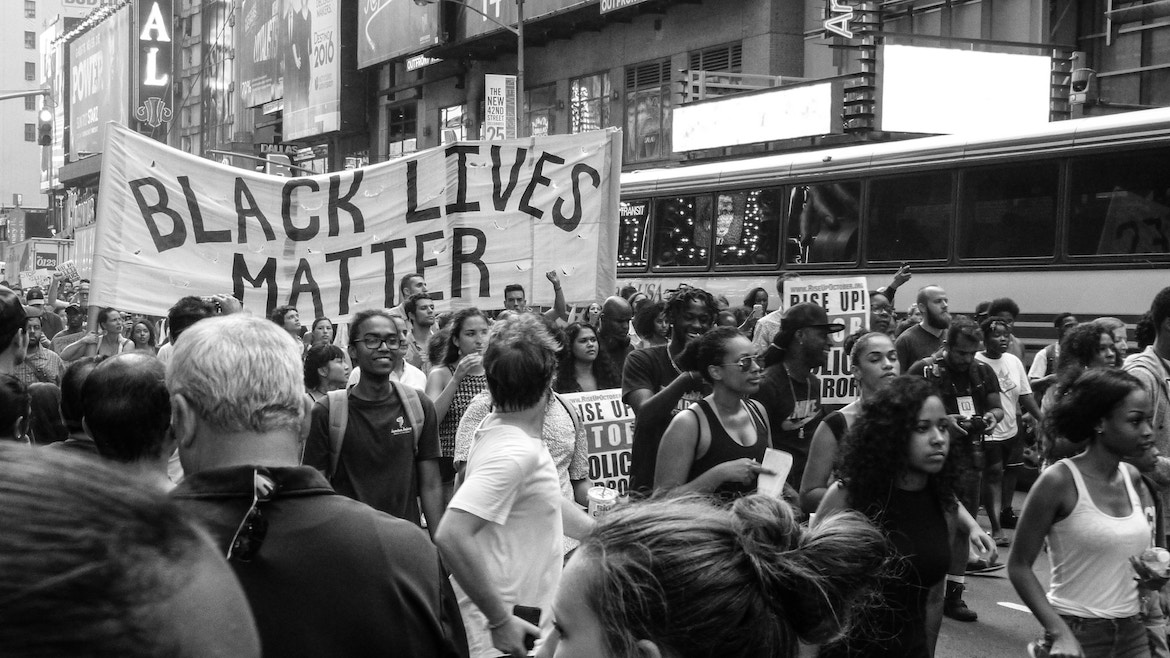
11 March 2019

Photo by Nicole Baster on Unsplash
In an interview appearing in Futures of Black Radicalism, Angela Davis, world-renowned professor and political activist, identifies Black Lives Matter (BLM) as a social movement that is creating a “new Black feminist-inflected internationalism” that is informed by and responsive to queer theories and practices.
Davis proclaims that the poignant and ingenious hashtag, #BlackLivesMatter, created by Patrisse Khan-Cullors, Alicia Garza, and Opal Tometi in response to the killing of Trayvon Martin, galvanized the development of a transnational activist network that asks all of us to “radically resist the racist violence at the very heart of policing structures ... [and] move toward a more critical and more collective mode of justice.”
There is much to learn from a movement spearheaded by Black queer feminists who used resistance to violence against Black people as an opportunity to challenge multiple modes of oppression. One of those lessons is the essential role that collaboration plays in social innovation.
Patrisse Khan-Cullors and asha bandele’s When They Call You a Terrorist: A Black Lives Matter Memoir tells the story of Khan-Cullors’ path to activism and the creation of the organization’s guiding philosophy for making decisions and taking action.
The movement is premised on a commitment to an evolving political framework that responds to the changing needs of Black people, continuous and collaborative conversations that include their “Trans and gender non-conforming comrades,” and an insistence that local BLM chapters remain “Black women-affirming spaces free from sexism, misogyny, and male-centeredness.”
One could argue that their devotion to inclusive, collaborative conversations is a driving force behind the movement’s success. It encourages BLM leaders and the movement’s numerous chapters to remain dynamic, connected, coordinated, and open to new ideas. All are hallmarks of group genius and innovative organizing.
The short yet distinguished history of BLM once again proves that collaborative teams committed to critical conversations are incubators of innovation.

Photo by Toa Heftiba on Unsplash
Far too often, we dismiss the essential role that collaboration plays in producing innovative responses to challenges and sparking breakthrough creativity. Keith Sawyer’s compelling research in Group Genius: The Creative Power of Collaboration leads us to conclude that BLM’s formula for success is not an aberration. On the contrary, collaborative sharing of ideas is the source of every moment of brilliant insight and discovery.
Sawyer implores us to ignore the myth of the isolated and solitary genius inventor because innovation is “always a story of group genius.”
Anita Wooley, a professor of organizational behavior and collective intelligence at Carnegie Mellon University, concurs. After studying 699 people in small groups working on a variety of projects, she declares that a team of average performers skilled at conversation and collaboration will always outperform a superstar working on their own.
Sawyer concludes that the productivity and innovation of collaborators far exceed that of solo artists because teams possess the unique ability to bring together and reconfigure an abundance of “small sparks of insight” that can be combined in a manner that results in breakthrough innovation.
Khan-Cullors, Garza, and Tometi’s constant and evolving conversations and collaboration produced several sparks of insights that came together to birth an international movement. It is undeniable that their work transformed the national and international dialogue regarding police brutality and the disposability of Black women and men. It is also undeniable that the global movement that their efforts created would not exist if each attempted to work alone.
The transformative power of the ensemble, their group genius, far exceeds each person’s individual capacity. Aghast by Trayvon Martin’s murder and needing to speak what one would hope is obvious, #BlackLivesMatter, these three women became the spark for a global conversation that continues to reshape opinions, reform policies, and reinvigorate communities.
The Social+Justice Innovation Institute (S+JII) seeks to produce learning environments that harness the creative power of collaboration. One of our core objectives is to offer an experience that aids institute participants in identifying and combining sparks of insights in ways that can produce innovative responses to challenges they are addressing on their campuses.
Ed Lee III, EdD
Curriculum Director & Lead Facilitator
Social+Justice Innovation Institute
References
Davis, A. (2017). Angela Davis: An Interview on the Futures of Black Radicalism. In G. T. Johnson & A. Lubin (Eds.), Futures of Black Radicalism. Brooklyn, NY: Verso.
Khan-Cullors, P., & bandele, asha. (2018). When They Call You a Terrorist: A Black Lives Matter Memoir (Reprint). New York, NY: St. Martin’s Press.
Sawyer, K. (2017). Group Genius: The Creative Power of Collaboration (2nd ed.). New York, NY: Basic Books.